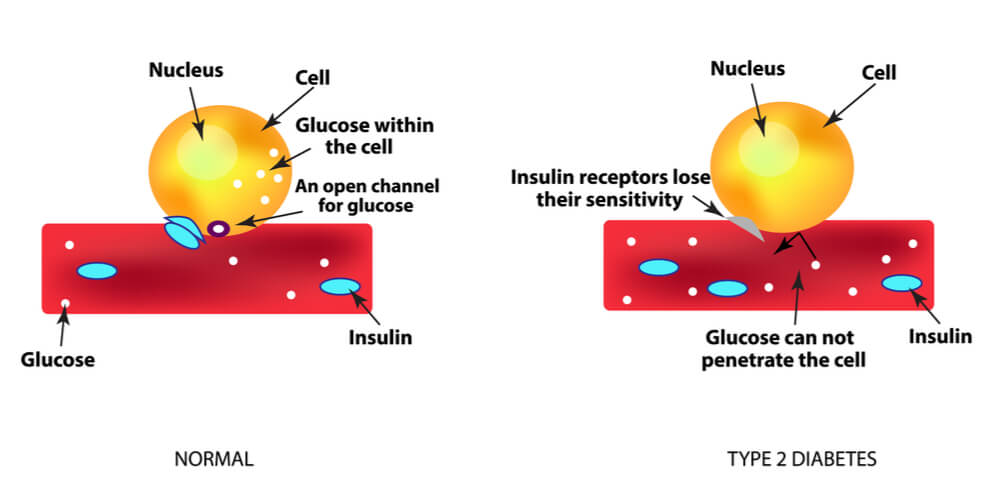Newsletter Signup - Under Article / In Page
"*" indicates required fields
Researchers at the Université de Genève have unravelled the cellular and molecular mechanisms linking obesity and insulin resistance.
We have long known about a link between obesity and type 2 diabetes, but discovering the underlying mechanisms has proved difficult. A group of researchers at the Université de Genève, Switzerland, may have found a protein that links changes in the liver of obese individuals with insulin resistance. The study, published in Nature Communications, found that Protein Tyrosine Phosphatase Receptor Gamma (PTPR-γ) inhibits insulin receptors on liver cells, which could provide a new therapeutic target thanks to the establishment of a link between obesity and insulin resistance.
The expansion of fat cells is a characteristic of obesity, which causes increased inflammatory signals that affect the liver. This inflammation activates nuclear factor kappa-light-chain-enhancer of activated B cells (NF-kβ), which is implicated in diabetes. The researchers focused on PTPR-γ, which is a target of NF-kβ. After assessing human cohorts, the researchers found that PTPR-γ levels in the liver increase with inflammation, which could inhibit the action of insulin.
The scientists followed these findings up, by modifying PTPR-γ expression in mice to see how its suppression and overexpression might affect insulin resistance. Mice lacking PTPR-γ, even on a high-calorie diet, did not develop insulin resistance, indicating that they were protected from diet-induced diabetes. When PTPR-γ expression was returned to normal in the liver, mice were once again prone to insulin resistance, highlighting the importance of the liver in the pathogenesis of type 2 diabetes.

Worldwide, there are 650 million people affected by obesity, and it is now a major global health issue. There are many risks that come with the condition, including type-2 diabetes – a condition that affects 425 million and forces healthcare systems around the world to spend in excess of $727B (€620B) a year.
Biotechs have been taking a number of different approaches to treating type 2 diabetes, despite lacking a clear understanding of some of the underlying mechanisms. Novo Nordisk’s candidate, semaglutide, outperformed Eli Lilly’s dulaglutide during a Phase III trial, while MorphoSys’ monoclonal antibody against myostatin is being tested by Novartis in a Phase II trial. Dutch researchers have chosen to harness the power of the microbiome, using fecal transplants to temporarily relieve diabetic symptoms.
Considering the exciting technology that is already under development in the field, it will be interesting to see how this study’s findings could affect current and future approaches. The research group hopes to move its findings towards the clinic, as it believes that the structure of the protein, PTPR-γ, is conducive to inhibition.
Images – Panda Vector / shutterstock.com; Timonina / shutterstock.com






